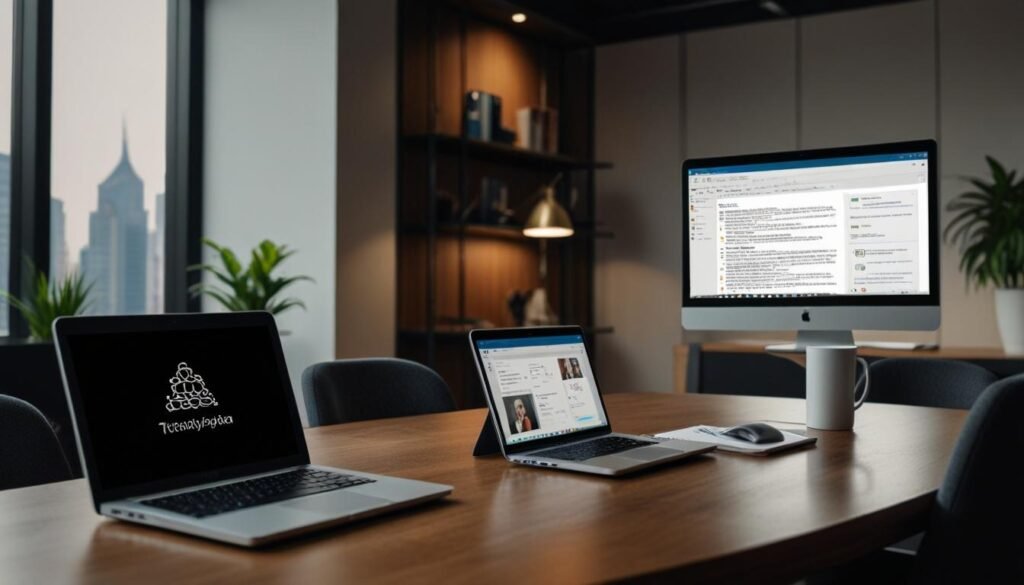The rise of AI transcription services in the workplace highlights significant privacy risks, as seen in a recent incident involving sensitive information being inadvertently shared during a meeting.
Artificial intelligence has made remarkable strides into the corporate arena, taking on tasks traditionally handled by human assistants. This transition has not been without its challenges, as recent events highlight the potential privacy risks associated with AI-assisted transcription services. A notable incident involving Alex Bilzerian, a researcher and engineer, underscores the delicate nature of AI’s role in corporate settings.
Bilzerian detailed an unexpected breach of confidentiality via the social media platform X, formerly known as Twitter. During a Zoom meeting with venture capital investors, an AI transcription service provided by Otter.ai generated a transcript of the meeting. Bilzerian, who had logged off before the meeting concluded, later received an email containing a transcript of the entire session. This included sensitive post-meeting discussions between the investors, which addressed their company’s strategic shortcomings and inaccurate metrics — information not intended for Bilzerian’s ears.
The investors, who remained unnamed, issued an apology to Bilzerian, but it was too late to mitigate the consequences — namely, the collapse of the potential business deal. This incident has cast a spotlight on the evolving role of AI transcription tools in professional environments and the inherent privacy challenges they present.
The integration of AI into workplace tools is becoming increasingly widespread. Corporations such as Salesforce, Microsoft, and Google are rapidly introducing AI-driven features aimed at enhancing productivity. Salesforce’s Agentforce, Microsoft’s AI Copilot, and Google’s Gemini are examples of initiatives designed to streamline customer service and sales processes. Even Slack, a popular workplace communication platform, has incorporated AI features to help summarise and track conversations.
However, these AI tools lack the nuanced discretion that human assistants traditionally provide. As Naomi Brockwell, a privacy advocate and researcher, points out, the rapid proliferation of such technology poses significant risks. She warns that constant recording and AI-generated transcriptions significantly undermine workplace privacy, potentially leading to legal repercussions and the unintentional dissemination of confidential information.
The implications extend beyond corporate leadership and high-stakes investors. Everyday employees also face the risk of inadvertently sharing damaging information. Isaac Naor, a software designer, recounted an uncomfortable experience with Otter’s service capturing unintended remarks during a muted segment of a meeting. The incident left him hesitant to inform the other meeting participant.
Otter’s AI features, such as OtterPilot, are designed to record, transcribe, and summarise virtual meetings. While the system is intended to capture only the audio of meetings and not private discussions, manual recording can inadvertently breach this boundary by capturing ambient discussions outside the meeting context.
Instances such as these have prompted discussions about the need for more robust user awareness and enhanced product design. Otter has emphasised the importance of adjusting settings to prevent undesired sharing and recommends obtaining consent before recording meetings. Additionally, integrating features that require explicit confirmation for transcript distributions could help mitigate these risks.
In other similar instances, Zoom’s AI Companion feature exemplifies the dual-edged nature of such capabilities. With the ability to send meeting summaries to all attendees, notification icons alert participants to ongoing recordings, thereby maintaining some level of transparency. However, these default settings can still lead to unintended disclosures if not managed diligently.
Hatim Rahman from Northwestern University’s Kellogg School of Management believes companies and users must share the responsibility for preventing unexpected outcomes of AI use in workplaces. He suggests product designs should consider various user demographics and their technological comfort levels, reducing assumptions about the AI’s functional capabilities.
Cybersecurity consultant Will Andre stresses the hazards posed by poorly controlled AI systems, sharing his experience with software that inadvertently exposed private company deliberations. Such incidents highlight the broader need for vigilance and savvy handling of AI tools in professional settings to prevent potentially damaging errors.
As AI continues to reform the dynamics of workplace tasks, both companies and individuals must navigate its benefits alongside its potential pitfalls to preserve confidentiality and trust.
Source: Noah Wire Services
















